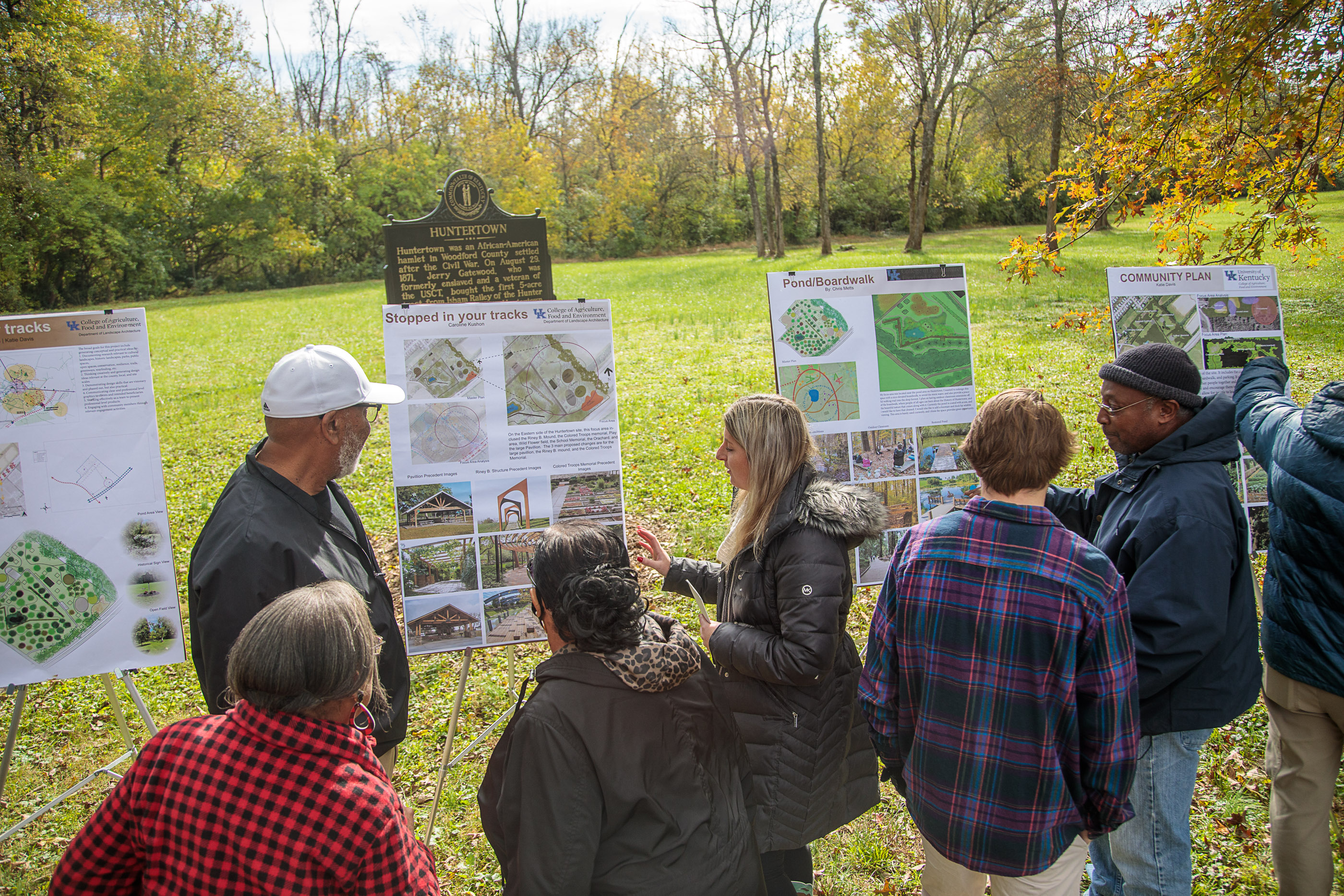UK students help revitalize historical community
UK students help revitalize historical community


University of Kentucky landscape architecture students are using their design expertise to revitalize a historic property in Woodford County.
Huntertown is an African American hamlet which once stood on 50 acres outside of Versailles. Established in 1871 by former slaves, it was active until 2006. Now whittled down to 38 acres, the area recently opened as the Huntertown Community Interpretive Park with help from UK College of Agriculture, Food and Environment students. .
Students in the department of Landscape Architecture are making the park more accessible to the public through a number of long-term improvements including playgrounds, pavilions, a community garden, learning areas and a partial recreation of the Riney-B Railroad, which went through the community.
“We wanted to bring attention to some of the great spaces that Huntertown offers,” said Jayoung Koo, UK associate professor of landscape architecture who led the project. “This is a really historic area which many people in the surrounding area may not even be aware of. I really think this is a space that will bring people together. It also gets our students to think creatively to improve upon the area’s already existing landscape and history, while working with community leaders and stakeholders to create what is best for the park.”
The original idea for the park came in 2019 from the local community. The next year, the Huntertown Community Interpretive Park received funding from the Woodford County Community Foundation, with a match from the Woodford County Fiscal Court. The funds enabled organizers to hire two CAFE student interns and kick-start the project in summer 2020. The landscape architecture design studio class worked on phase one of the project. In 2021, thanks to funding from a UK Sustainability Challenge Grant, a new group of students from the class began long-term plans for the park.
Koo’s students developed designs for different areas of the park including areas for recreating cultural memory, wetland management, conservation, health well-being and education in public spaces. The design solutions were created to complement already existing conservation efforts.
Each student created three design solutions based on ideas for small, medium and large budgets. After students presented their layout concepts, community leaders made decisions based on preference, function, style and budget needs.
“I think the main thing that we got from this project was introducing the community engagement aspect into designing,” said Felix Lowery, a student in Koo’s class. “In previous studios, we've gone over how to read the physical landscape and how to look at the soils and the drainage, but this was the first time that we really looked at the historical, budgetary and social aspects of a project. You can come up with the design of a project in the studio, however, getting out there and engaging with the public and community leaders is a totally different animal. It’s great practice for the future.”
Koo touts the project as something hugely beneficial to both the community and the students.
“I think incorporating our students’ ideas into this will not only bring attention to this great park, but also to some of the things that our students are able to accomplish with their design skills,” Koo said. “Huntertown has a rich history, and I think this is a great way to both represent its heritage and educate the community.”
Horticulture Landscape Architecture Students